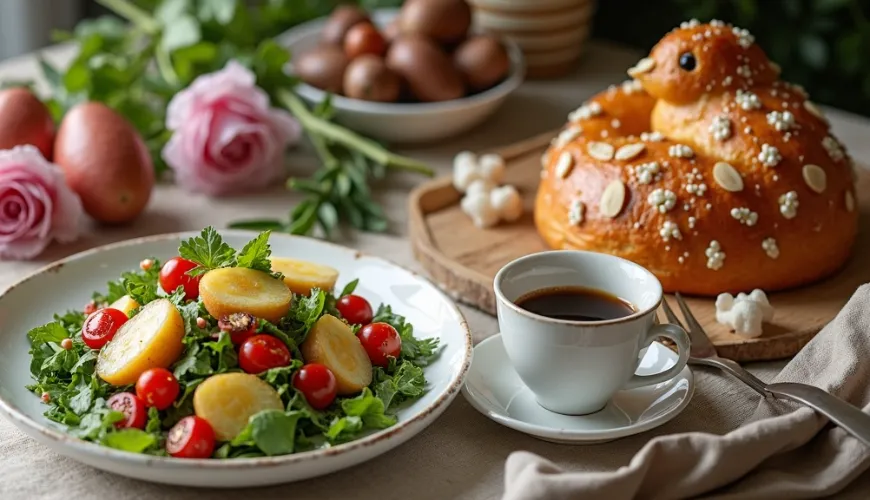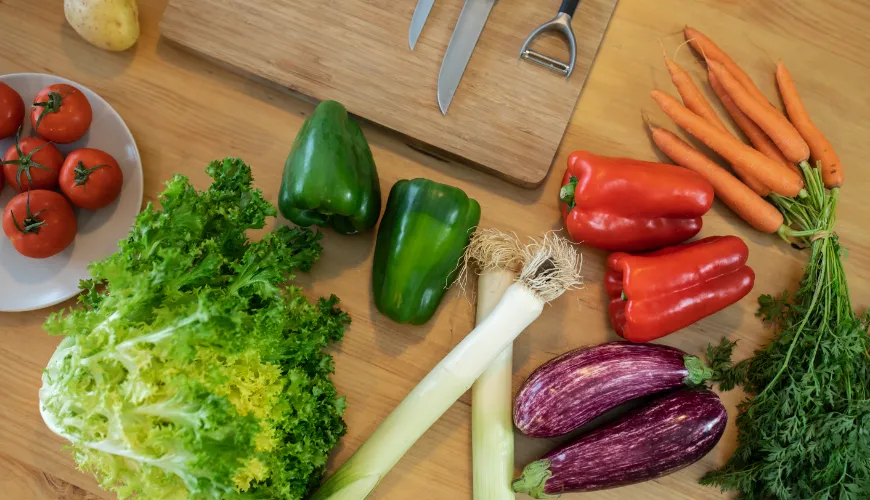
How Colomba Potatoes Surprise with Their Taste in Czech Cuisine

Italian Easter Specialty Colomba and How Potatoes Also Surprise
When you hear Colomba, most people think of the fluffy sweet Easter bread from Italy. Few, however, know that the same word also refers to a popular variety of potatoes. Two faces of one name – yet each offers a completely different experience. And that's the charm of this article: connecting the world of traditional Italian pastry with home potatoes that you might have in your pantry right now. What do they have in common and why should you be interested in both?
Colomba pasquale - Symbol of Italian Easter
Colomba pasquale, literally "Easter dove," is a sweet pastry prepared mainly during the spring holidays. Its shape resembling a dove symbolizes peace and hope – values associated with the Easter message. It is similar to the Christmas panettone, but with a different dough and decoration.
The dough contains wheat flour, eggs, sugar, butter, and often candied fruit. The surface of the colomba is richly sprinkled with pearl sugar and almonds. It's delicate, slightly sweet in taste and pairs perfectly with afternoon coffee or as a festive breakfast. In Italy, it is common to give colomba as a gift – similar to how lamb or decorated eggs are given in the Czech Republic.
Making colomba in Italy is almost a ritual. Famous bakeries and confectioneries compete in the perfection of execution. Some brands use natural yeast, others experiment with flavors – from chocolate to pistachios to lemon and ginger. This fragile loaf is not just a dessert, it's a cultural icon.
Interestingly, colomba has a protected designation of origin within the EU. This means that true colomba must be made according to traditional methods and recipes. Just like champagne can only come from the Champagne region, colomba is not just any sweet pastry.
Colomba Potatoes - An Underrated Treasure of Czech Cuisine
At the opposite end of the culinary spectrum stands Colomba potatoes – a variety that has been gaining increasing popularity among gardeners and professionals in recent years. It's an early table variety appreciated by anyone who desires potatoes with a fine structure, pleasant buttery taste, and versatile kitchen use.
Colomba potatoes have brightly yellow flesh and a smooth skin that is easy to clean. They are ideal for boiling with the skin on, for salads, mashed potatoes, or as a side dish. Their firm consistency prevents them from overcooking and they hold their shape – which anyone who has ever made potato salad that turned into mashed potatoes will appreciate.
Growers commend Colomba potatoes for their disease resistance and early growth, meaning they can be harvested as early as the beginning of summer. This feature makes them attractive for home growers who want to have their harvest as soon as possible.
An interesting example of their use is a family from South Bohemia that has been growing Colomba in their garden for the third year. "We don't want heavy starchy potatoes that fall apart. Colomba is the exact opposite – it holds its shape, tastes great, and the kids love them just with butter and salt," says Mrs. Lucie, who previously relied exclusively on store-bought potatoes.
Colomba Recipe - From Sweet to Savory
Whether you decide to try colomba as pastry or as a potato, you can experiment with recipes in both cases. With traditional Italian pastries, you need to account for longer preparation – due to rising and baking. Numerous variations can be found online, but the basic recipe for colomba pasquale includes:
- 500 g of all-purpose flour
- 150 g of sugar
- 150 g of butter
- 3 eggs
- 25 g of fresh yeast
- lemon zest
- vanilla extract
- candied orange peels
- for topping: pearl sugar and whole almonds
The dough must be allowed to rise at least twice to become sufficiently fluffy. It is baked in a special dove-shaped mold, which can be substituted with a classic cake pan.
On the other side of the spectrum are recipes using Colomba potatoes, which surprise with their versatility. Try a simple salad with spring vegetables, roasted potatoes with rosemary, or mashed potatoes with roasted garlic – the taste will pleasantly surprise you. Due to their tenderness and buttery consistency, they don't need a lot of seasoning. These potatoes carry a natural sweetness that common varieties lack.
Two Worlds, One Name
At first glance, it may seem that colomba as sweet pastry and colomba as potato have nothing in common. But their connection in the kitchen can bring an interesting contrast. Why not host an Easter brunch serving colomba pasquale with coffee and at the same time a salad from fresh Colomba potatoes?
This combination of sweet and savory is typical for many Mediterranean cuisines. Italians, for example, like to serve pastries with lightly salted cheeses or cured ham. We can experiment similarly – perhaps with the help of these two "colombas."
The word "colomba" itself is interesting, as it means dove in Italian. Whether it's a symbol of peace at a festive table or the name of a potato that brings calm to the kitchen with its reliability, one thing is certain – colomba is worth knowing from both sides.
In a world where food is often reduced to function and purpose, it's refreshing to come across such a connection of tradition and quality. While colomba pasquale evokes family gatherings, sunshine, and Easter joy, Colomba potatoes bring honest taste and simplicity that won't disappoint.
Have you ever thought that one word could represent two such different, yet equally valuable ingredients in our lives? Maybe it's just a coincidence. Or perhaps proof that the kitchen is a place where even the greatest differences can meet harmoniously.

